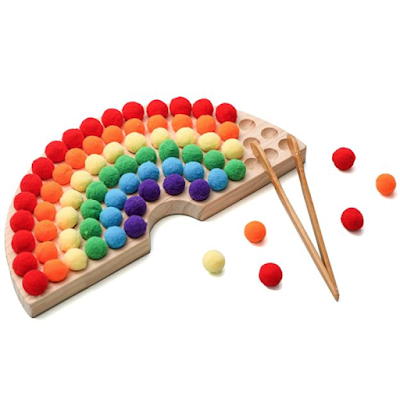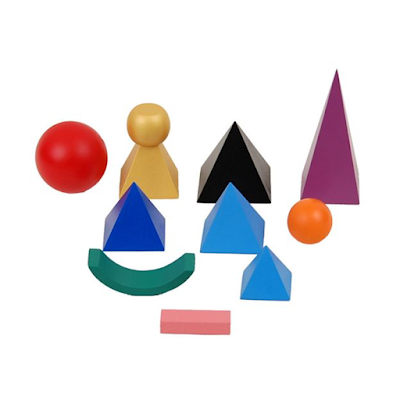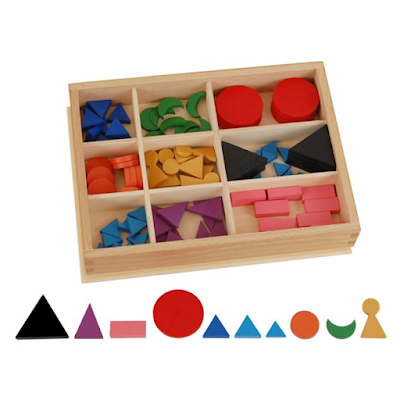Montessori education is a revolutionary approach that places children at the center of their learning experience. This method, developed by Dr. Maria Montessori over a century ago, emphasizes hands-on learning and independence. Within the Montessori framework, two vital components are the Practical Life Materials and Grammar Symbols, which play a crucial role in fostering children's exploration of the world and their grasp of language in a natural and meaningful way. In this article, we'll delve into the significance of these materials and how they shape a child's educational journey.
Empowering Independence through Practical Life Materials
At the core of Montessori education is the belief
that children have an innate drive to explore and learn about their
surroundings. To nurture this natural curiosity and encourage independence, Montessori
Practical Life Materials by Kid Advance, are invaluable. These materials
are meticulously crafted to mimic everyday objects, such as jugs, pitchers,
spoons, and brushes, scaled down to fit a child's hand comfortably. This design
enables children to grasp and manipulate these objects with ease.
The Versatility of Montessori Practical Life
Materials
Montessori Practical Life Materials serve a dual
purpose. First, they facilitate the development of fine and gross motor skills.
Activities such as pouring, spooning, sweeping, and buttoning require precise
movements, honing a child's dexterity and making them more self-reliant.
Second, these materials impart a sense of purpose and accomplishment in the
child. Pouring water from one container to another, for example, offers a
tangible sense of achievement and instills a sense of responsibility.
Fostering Order and Concentration
Montessori Materials also play a pivotal role in
cultivating order and concentration, two vital life skills. By engaging
children in tasks that demand precision, they learn to complete activities with
care and undivided attention. This attention to detail can be applied to other
aspects of their lives, such as reading, writing, and problem-solving.
Grammar Symbols: Unlocking the Secrets of Language
In the Montessori classroom, language development is
a multifaceted journey. Montessori Grammar Symbols serve as the stepping stones
to understanding language structure and rules. These symbols represent various
parts of speech and are designed to be visual aids for young learners. Through
the use of symbols and hands-on activities, children are introduced to the
building blocks of language in a manner that makes learning grammar enjoyable
and intuitive.
Visual Learning with Montessori Grammar Symbols
Montessori Grammar
Symbols offer a visual and tactile approach to language. Instead of relying
on rote memorization or dry grammar exercises, children interact with these
symbols, arranging them to form sentences. This approach transforms the
abstract rules of grammar into concrete, relatable concepts, making learning an
engaging and intuitive experience.
Grasping Language Structure
One of the key advantages of Montessori Grammar
Symbols is their ability to break down the complex structure of language into
manageable parts. Children learn about nouns, verbs, adjectives, articles, and
other grammatical elements in a hands-on way. This understanding lays a robust
foundation for future language learning and literacy development.
Cultivating a Lifelong Love for Language
By introducing grammar through Montessori Grammar Symbols in a playful and interactive manner, children develop a positive attitude towards language. They see language as a tool for expression and communication rather than a daunting set of rules. This early exposure helps them embrace the beauty of language and become confident, articulate communicators.
The Synergy of Practical Life Materials and Grammar
Symbols
Montessori education is about creating a harmonious
learning environment where children develop skills, knowledge, and a love for
learning. Practical Life Materials and Grammar Symbols are seamlessly
integrated into the curriculum, offering a holistic educational experience. The
independence, order, concentration, and language skills cultivated through
these materials lay the foundation for a well-rounded education.
In the realm of Montessori education, Practical Life
Materials and Grammar Symbols are not mere tools; they are gateways to
self-discovery, language mastery, and a lifelong love for learning. These
materials empower children to become independent, confident, and enthusiastic
learners who are well-prepared for the challenges and opportunities of the
future. It's a journey of exploration, growth, and discovery, and the
Montessori approach provides the map and compass for this incredible adventure.








No comments:
Post a Comment